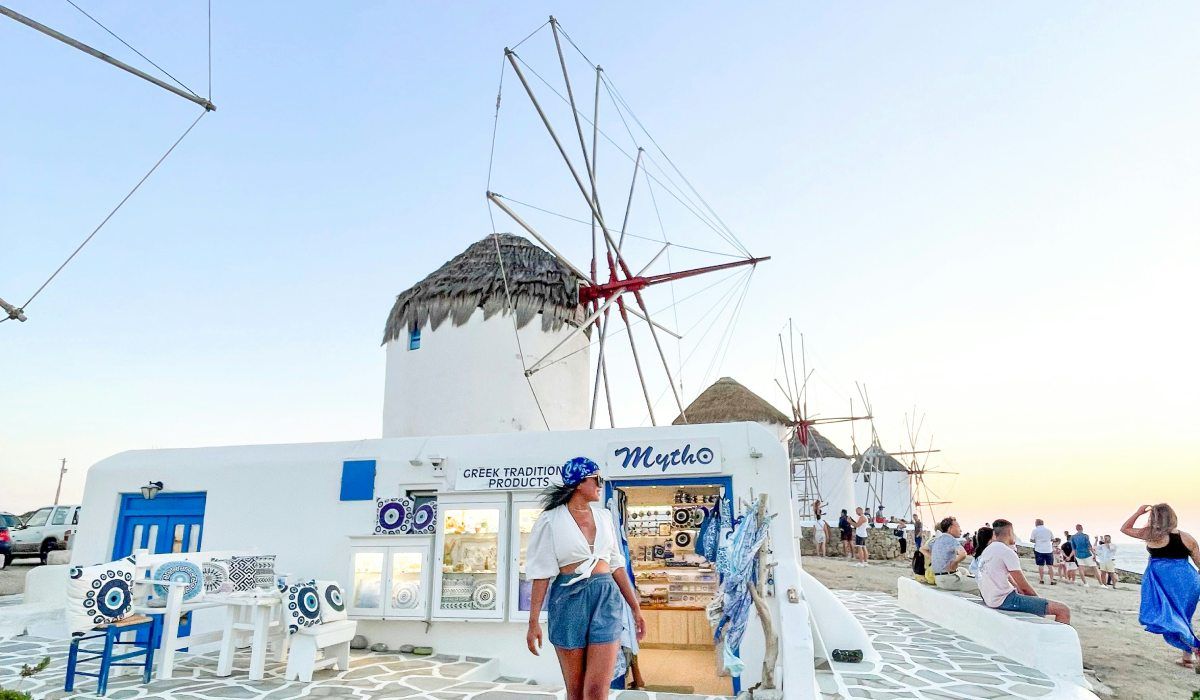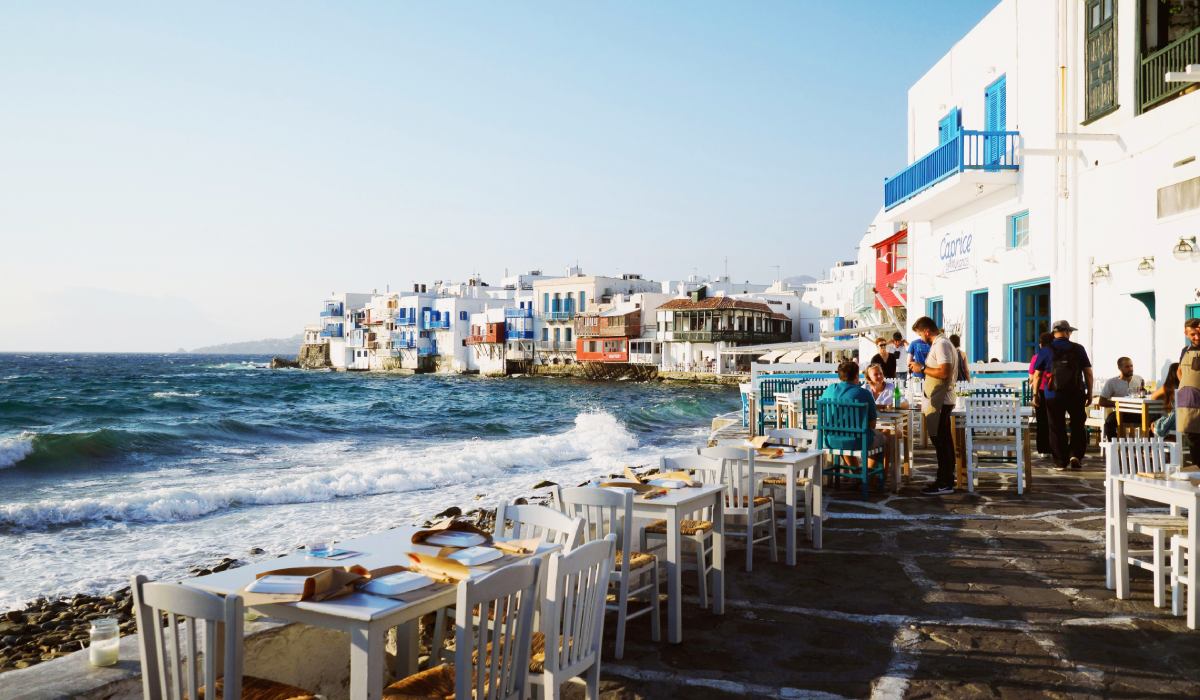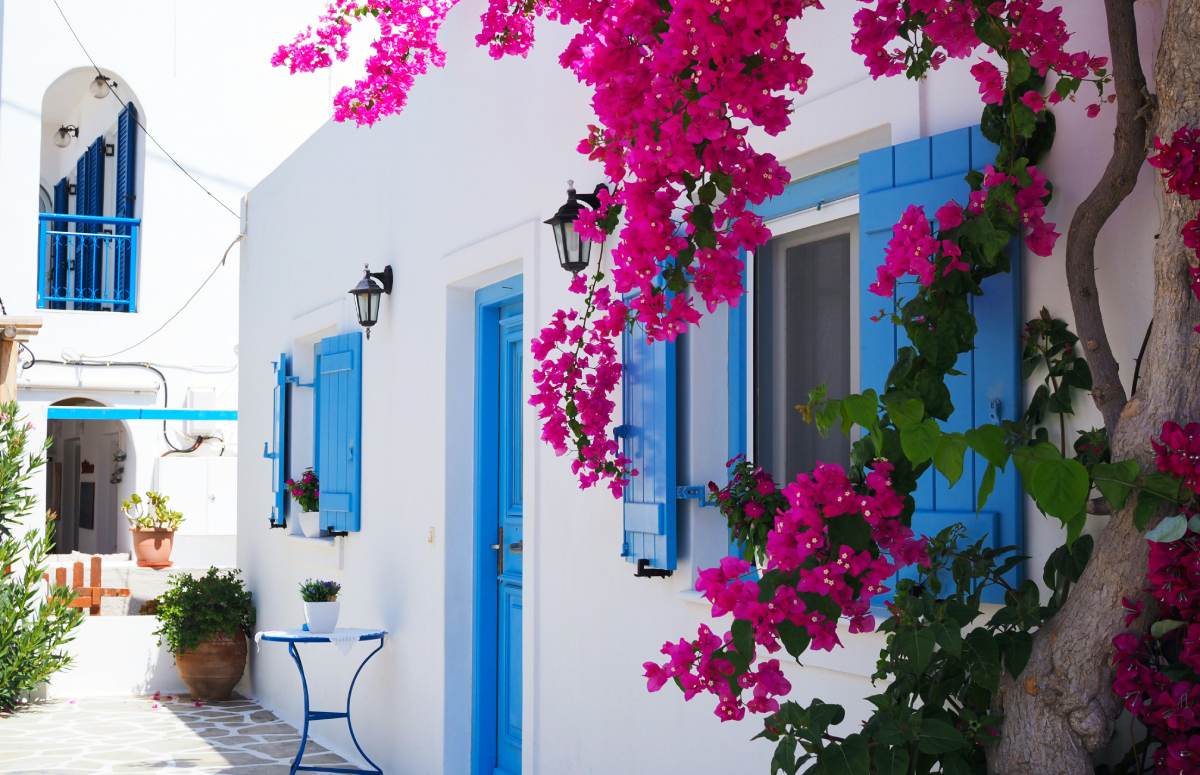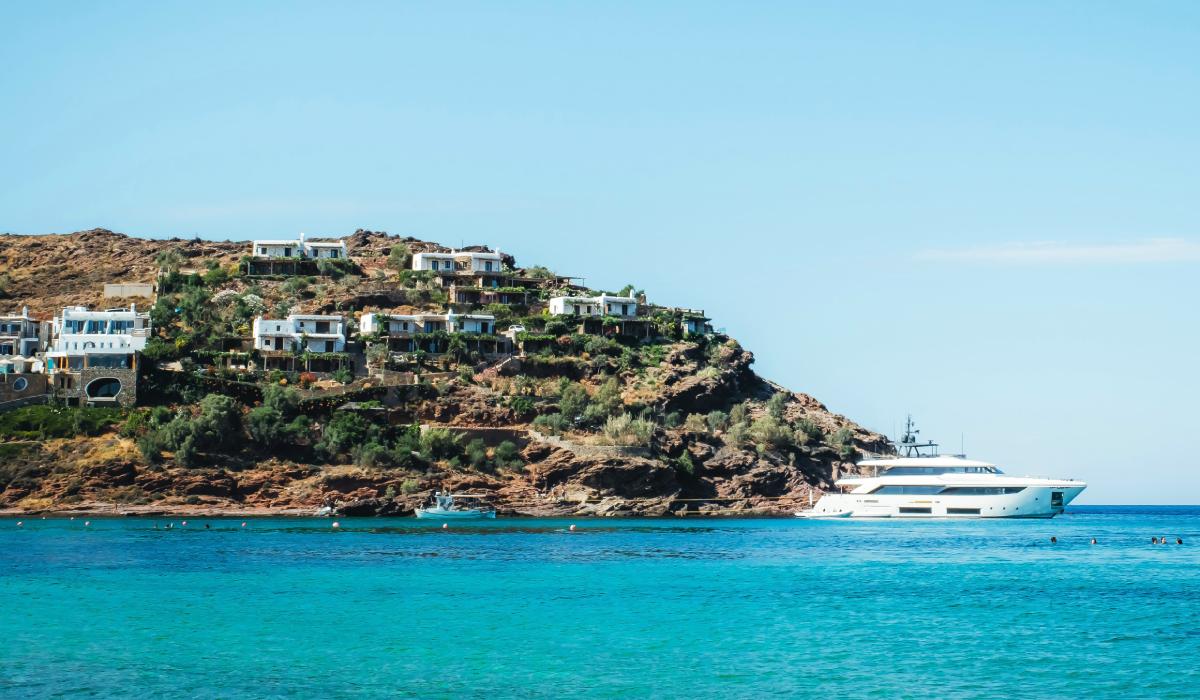Best Time to Visit Mykonos
Travel Guides
Travel Guides


Wondering about the best time to visit Mykonos, Greece? This dazzling Cycladic island transforms with the seasons—spring brings quiet charm, summer bursts with vibrant nightlife, autumn offers a more relaxed pace, and winter reveals a truly authentic side of local life. Choosing the right season can completely change your Mykonos experience.
One of the most flexible and scenic ways to arrive is by taking a ferry to Mykonos. Especially in the low season, ferries offer fewer crowds, better prices, and unforgettable views of the Aegean Sea. The most popular ferry routes connect Mykonos with Athens and Santorini, making it easy to decide between Mykonos or Santorini—or even better, to combine both islands into one unforgettable Greek itinerary.
In this guide, you’ll discover exactly when to go to Mykonos, what the weather in Mykonos is like month by month, and why traveling by ferry outside the peak summer season might just be the smartest decision for your dream trip to Greece.

If you’re wondering about the best time to travel to Mykonos for pleasant weather and fewer crowds, spring is a fantastic choice. From April to June, temperatures average a comfortable 20–25 ºC, the sea begins to warm, and the days stretch longer—perfect for sightseeing and beach hopping. This shoulder season also means lower prices and a calmer atmosphere compared to the busy summer months. You can stroll around the iconic windmills and Little Venice without the rush, relax on the beaches in peace, and enjoy authentic local taverns at better rates. With ferries from Athens and other nearby islands running regularly, it’s also one of the best times for island hopping in Greece.

For many, summer is the best time to travel to Mykonos, but it’s also the busiest. From July to August, the island transforms into an international hotspot, with temperatures soaring to 28–30 ºC and the Aegean Sea at its most inviting. This is peak season, when Mykonos earns its reputation as one of the world’s most glamorous party destinations. Expect iconic beach clubs like Nammos, Scorpios, and Tropicana to be buzzing day and night, while world-famous DJs light up clubs such as Cavo Paradiso. Be prepared: accommodation, restaurants, and ferry tickets to Mykonos are at their most expensive, and booking well in advance is absolutely essential.
Many travelers agree that autumn is the best time to visit Mykonos. Between September and October, temperatures cool slightly to a pleasant 22–27 ºC, the sea remains warm, and the crowds of summer begin to disappear. This creates the perfect balance: you can still enjoy Mykonos beaches without the chaos, dine in traditional taverns without waiting for a table, and wander Mykonos Town in a relaxed atmosphere. Autumn is also ideal if you’re deciding between Mykonos or Santorini—both islands are at their most enjoyable, and ferries to Paros, Naxos, and Santorini run frequently with fewer tourists on board.
Located in the heart of the Cyclades, Mykonos enjoys a Mediterranean climate with hot, dry summers and mild, humid winters. The island’s character shifts dramatically with the seasons, so choosing the best time to travel to Mykonos depends on the type of experience you want.
Summer (July–August): Hot and lively, with average temperatures of 28–30 ºC. Perfect for nightlife and world-famous Mykonos beaches.
Spring (April–June) & Autumn (September–October): Mild and pleasant, averaging 20–25 ºC. Ideal for sightseeing, island hopping, and a relaxed vibe.
Winter (November–March): Cooler at 12–15 ºC, with fewer visitors, authentic charm, and the lowest prices.
Whether you’re seeking beach parties in Mykonos, a cultural escape, or a peaceful off-season getaway, the island offers a season for every traveler.

While most travelers imagine Mykonos only in the height of summer, the truth is that the low season in Mykonos—spring and autumn—offers a completely different and equally rewarding experience. With fewer crowds, lower prices, and a still-pleasant Mediterranean climate, this is often considered the best time to visit Mykonos if you want to explore the island at your own pace. The atmosphere is calmer, ferries to Mykonos are cheaper and more comfortable, and you’ll enjoy a more authentic connection with local life.
One of the biggest advantages is the savings on accommodation and transport. Hotels in Mykonos and ferry tickets from Athens or Santorini can cost significantly less compared to July and August, and last-minute deals are easier to find. This makes low-season travel perfect for those who want flexibility without breaking the bank.
The beaches also take on a different charm during these months. Elia, Agios Sostis, and Paraga Beach are free from the summer crowds, offering space to truly relax. The sea remains warm well into autumn, so you can still swim and sunbathe in peace. Add to this the more authentic local experience—with tavern owners, café staff, and boutique hotel hosts having more time to chat—and you’ll feel welcomed into the island’s true rhythm of life.
Traveling outside peak months also means more availability and flexibility. You don’t have to book everything months in advance, which allows you to improvise day trips or ferry routes to nearby islands like Paros or Naxos depending on the weather or your mood. And with mild temperatures between 20–26 ºC, exploring the island by motorbike, car, or even on foot is far more comfortable than under the blazing summer sun.
Finally, one of the often-overlooked benefits is that taking a ferry to Mykonos in low season is far more enjoyable. With fewer passengers, there’s more space, better seat availability, and a much more relaxed journey across the Aegean Sea.

Taking a ferry to Mykonos is more than just a way to travel, it’s part of the experience. Cruising across the Aegean Sea lets you soak in the views, move between islands flexibly, and combine Mykonos with other destinations in the Cyclades. Ferries run year-round, though timetables are reduced in the low season, and in summer the frequency increases with multiple daily departures. Here are the main ferry routes to Mykonos and why they’re so popular.
The Athens to Mykonos ferry is the most common route. You can depart from two main ports:
In summer, there are several ferries daily, while in spring and autumn the frequency is slightly reduced but still reliable. If you’re traveling in July or August, it’s best to book tickets in advance as demand is very high.
The Santorini to Mykonos ferry is one of the most popular connections in the Cyclades, perfect for those deciding between Mykonos or Santorini—or better yet, combining both islands. Fast ferries make the crossing in around 2 hours. In high season, multiple departures run daily, while in the quieter months, one or two trips per day usually operate. This route is the best option for travelers who want to visit both islands without the hassle of flights.
If you’re island hopping in the Cyclades, Paros and Naxos are excellent connections to Mykonos. Fast ferries cover the journey in just 40 minutes to 1 hour, making it easy to add Mykonos to a multi-island itinerary. Even in low season, at least a few services typically run, though on a reduced schedule.
The closest islands to Mykonos, Tinos and Syros, are linked by short and affordable ferry rides. Depending on the boat, the journey takes just 30–60 minutes, making them perfect for a day trip from Mykonos or as quick stopovers during island hopping.
Overall, traveling by ferry to Mykonos is one of the best ways to reach the island. It’s comfortable, flexible, and allows you to discover other jewels of the Aegean Sea along the way. Whether you’re coming from Athens, Santorini, or the nearby islands of Paros, Naxos, Tinos, or Syros, the ferry makes combining destinations simple and scenic, an essential part of any Greek island-hopping adventure.

Choosing the right accommodation in Mykonos depends on both the season and the type of trip you’re planning. In summer, demand is sky-high, so it’s essential to book well in advance. If you want to be at the heart of the nightlife, Chora (Mykonos Town) is the perfect base, while areas like Ornos and Psarou are great if you’re looking for stylish hotels close to the most popular beaches.
In spring and autumn, it’s much easier to find hotels in Mykonos or apartments at more reasonable prices, often with great options right by the coast. If you’re visiting in winter, staying near the center of the island is the best choice, as it makes getting around simpler and eliminates the need for long transfers.
During the summer season, public buses run regularly from Mykonos Town to the island’s main beaches, making it easy to move around without a car. However, in spring, autumn, and winter, services are less frequent. That’s why many travelers choose car rental in Mykonos or a motorbike to explore the island at their own pace.
Another fun and practical option is renting a quad (ATV), which is ideal for driving along smaller roads and uncovering hidden coves. For those who prefer not to drive, there are reliable taxi services and private transfers available from Mykonos Airport or the port, offering stress-free transport to your hotel.
If you’re visiting during the busy summer months, it’s highly recommended to book your flights to Mykonos, hotels, and ferry tickets well in advance to secure the best options. In spring and autumn, you’ll have more flexibility, but it’s still smart to double-check ferry schedules from Athens or Santorini a few days before your trip, as routes can change depending on the season. In winter, plan ahead by confirming which hotels and restaurants are open, since many close during the off-season.